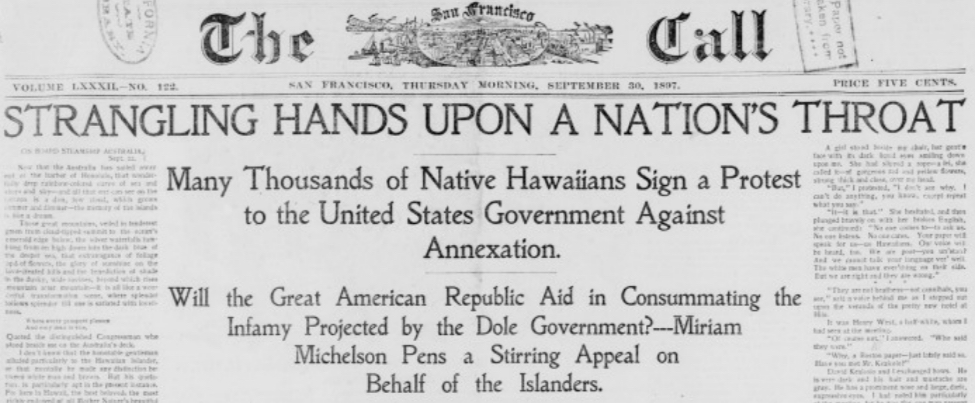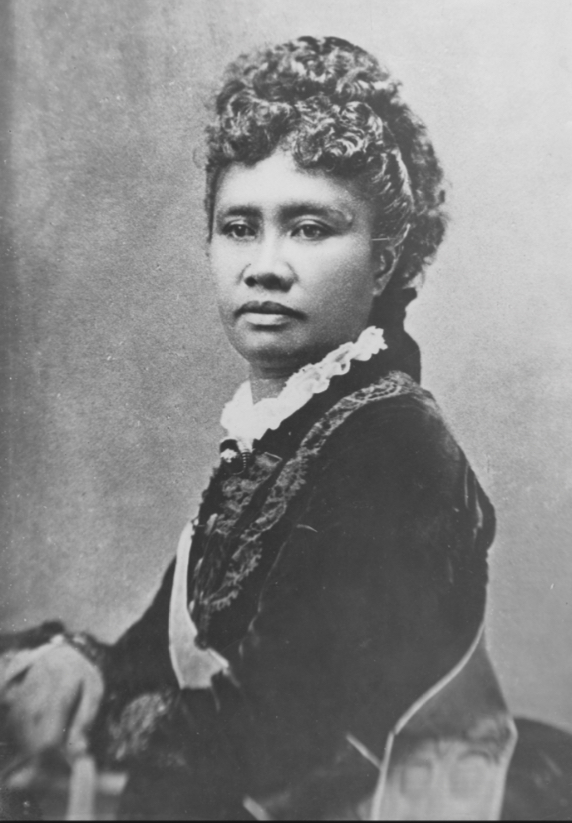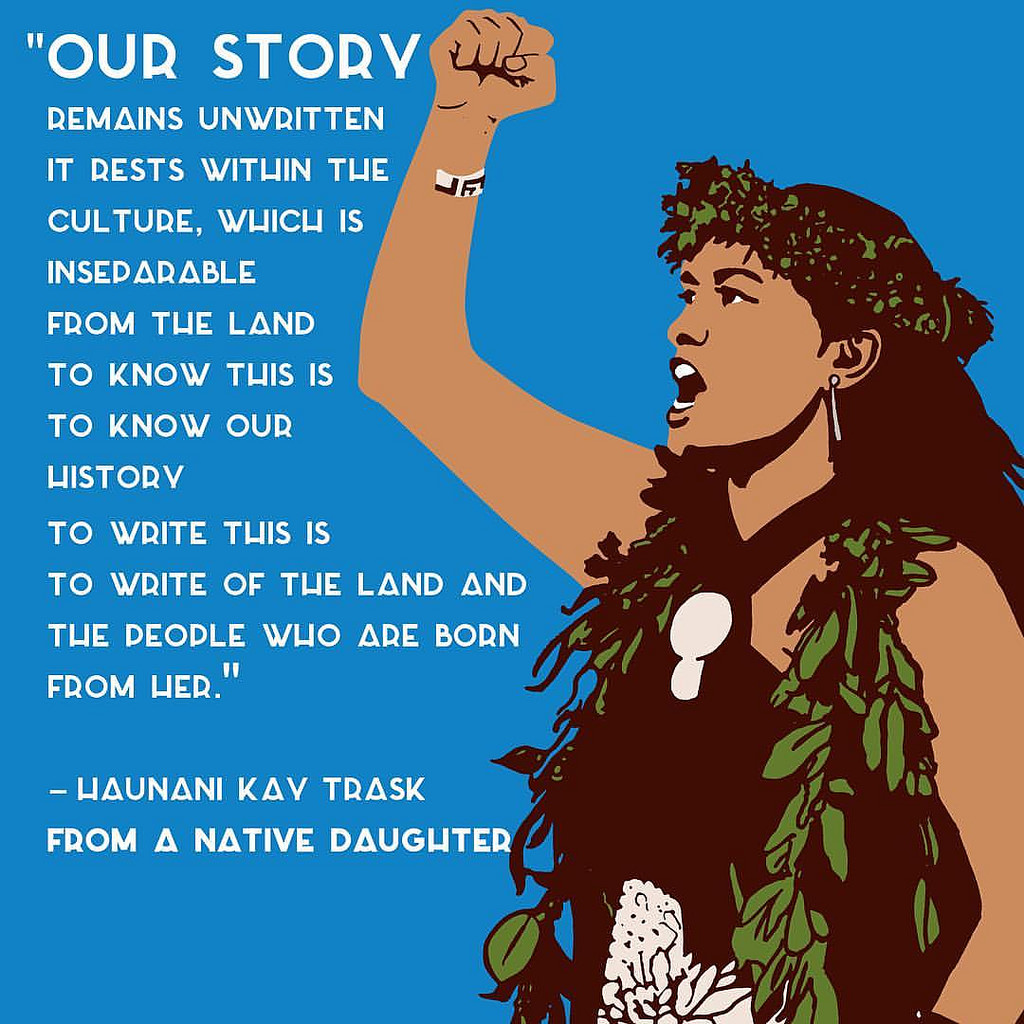MCKINLEY’S LEGACY OF PAIN
Illegal Seizure, Cultural Genocide, Humanitarian Violations
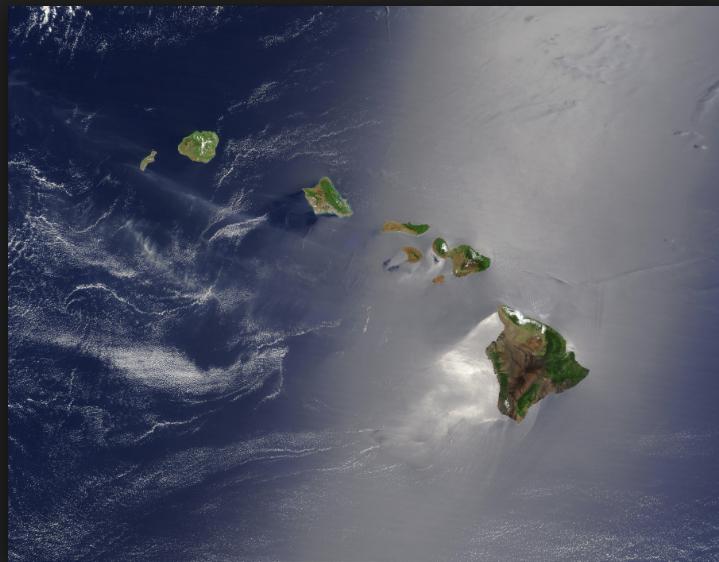
INTERFERENCE AND SEIZURE
***Before reading this section, please take note that many legal scholars, Native Hawai’ian or otherwise, describe the current status of Hawaii, under international law, as an illegal occupation. Native Hawai’ians have been fighting to regain control of their nation as they face many unjust and profound hardships and legal persecution set in motion by McKinley’s seizure of the islands.***
After William McKinley won the 1896 U.S. presidential election, he partnered with others who wished to seize the beleaguered kingdom of Hawai’i from Queen Liliʻuokalani. This attention was not new, with previous years resulting in the overthrow of the queen’s predecessor King Kalākau and subsequent imposition of laws designed to severely disenfranchise most Hawai’ians and immigrant laborers in order to favor the wealthier, white elite.
The story of Native Hawai’ian’s response to McKinley’s annexation is an all-too-common account of US business and military interests subverting Native Hawai’ian’s attempts to protect their cultural heritage and maintain a national identity. The Hui Aloha Aina for Women and the Hui Aloha Aina for Men organized a mass petition drive. They hoped that if the U.S. government realized that the majority of Native Hawai’ian citizens opposed annexation, the move to annex Hawai’i would be stopped. Between September 11 and October 2, 1897, the two groups collected petition signatures at public meetings held on each of the five principal islands of Hawai’i. The petition, clearly marked “Petition Against Annexation” and written in both the Hawaiian and English languages, was signed by 21,269 Native Hawai’ian people, or more than half the 39,000 Native Hawai’ians and persons of mixed-blood. Source
McKinley would ultimately disregard their voices. The 1897 Petition by the Hawai’ian Patriotic League stands as evidence that the Native Hawaiian people objected to annexation, but because the interests of the businessmen won out, over the coming decades most historians who wrote the history of Hawai’i emphasized events as told by the Provisional Government and largely neglected the struggle of the Native Hawai’ians. Source
“That first night of my imprisonment was the longest night I have ever passed in my life; it seemed as though the dawn of day would never come.”
Queen Lili’uokalani
We need Hawai’i just as much and a good deal more than we did California. It is Manifest Destiny.”
William McKinley
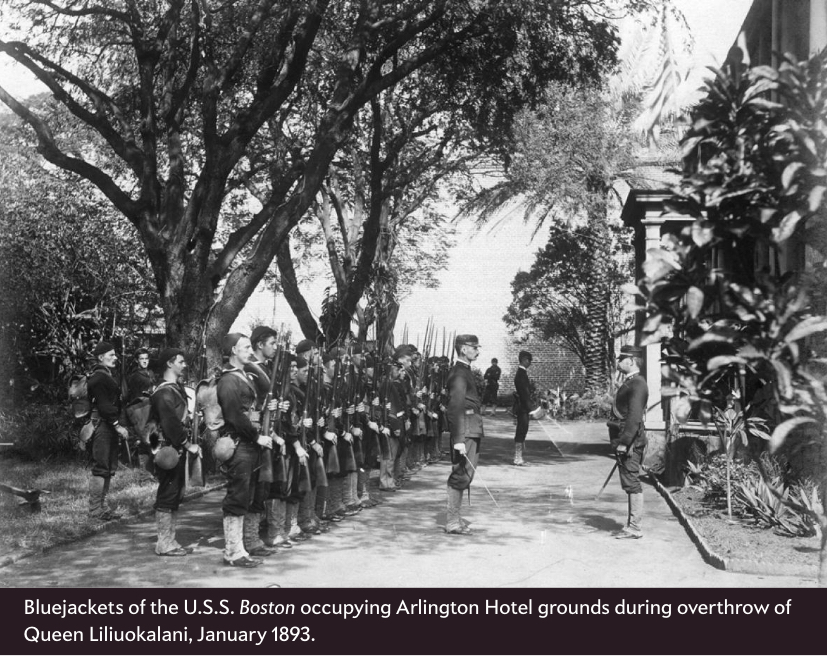
Haku Composed by Queen Lili‘uokalani, March 22, 1895
Ko‘unoho mihi ‘ana, apa‘ahao ‘ia, ‘o ‘oeku‘u lama,kounaniko‘uko‘o . Whilst humbly meditating, within these walls imprisoned, thou art my light, my haven, thy glory my support. Ke Aloha O Ka
A “TURN OF THE SCREW”
Overview of Actions
Fearing that McKinley would order the military to massacre thousands, the Queen relented. The Hawai’ian People were subjected to continued aggression by representatives of the United States leading up to, and far beyond, McKinley’s decision to illegally annex the island nation for the benefit of US imperialist and commercial gain, initially transforming it into a white planter outpost, providing for missionary-descended sugar barons in the islands and imperialist Americans on the continent with a military watering hole in the Pacific. Source.
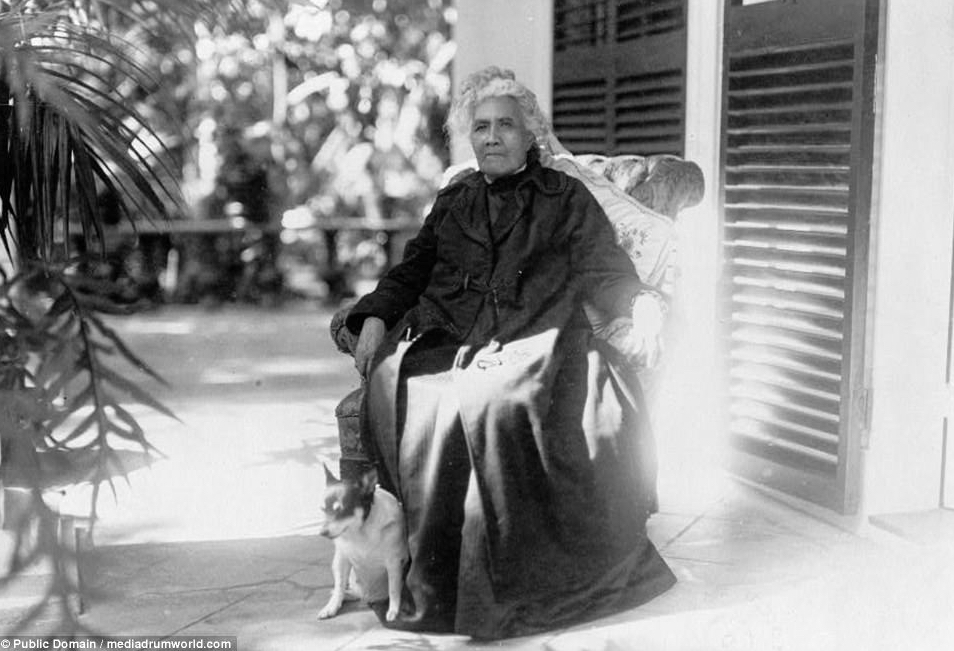
With the stroke of a pen, McKinley set in motion a series of illegal and devastating actions that would become violations of international humanitarian law and which continue to have profound consequences on the Native population to present day:
- The United States interfered with the methods of education
- Compelled education in the English language
- Banned the use of Hawai’ian (being the national language) in the schools/boarding schools
- Compulsory or automatic granting of United States citizenship upon Hawai’ian nationals
- Imposed conscription of Hawai’ian nationals into the armed forces of the United States
- Imposed the duty of swearing the oath of allegiance
- Confiscated and destroyed property of Hawai’ian nationals for militarization
- Pillaged the property and estates of Hawai’ian nationals
- Imposed American administrative and judicial systems
- Imposed American financial and economic administration
- Colonized Hawai’ian territory with nationals of the United States
- Permeated the economic life through individuals whose nationality and/or allegiance was American
- Denied Hawai’ian nationals of aboriginal blood their vested right to health care at no charge at Queen’s Hospital, which was established by the Hawai’ian government for that purpose. Source
- Loss of their original agricultural and aquacultural way of life due to urbanization limited access to Native foods due to cost and restricted land use policies,
- Relegation of Native culture to Western depictions of Polynesian culture for tourist advertisements. Source
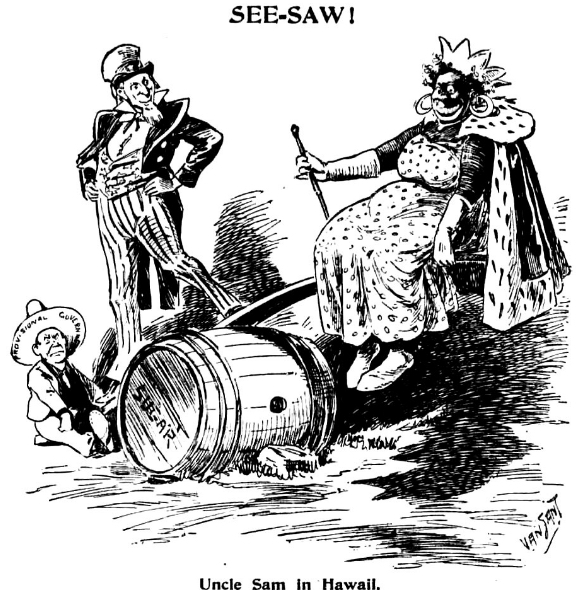
Source
Although the overthrow of the Kingdom of Hawai‘i occurred more than a century ago, historical loss of population, land, culture, and self-identity have shaped the economic and psychosocial landscapes of Hawai‘i’s people and limits their ability to actualize optimal health. Many Native Hawai’ians feel overrun by settlers: missionaries, capitalists, adventurers and hordes of tourists. Source
A LOOK AT LANGUAGE
In 1896, Hawai’ian was banned from all public schools, a move that resembled attempts in the continental U.S. to forcibly assimilate the Indigenous Peoples of North America in boarding schools, where the use of their languages was forbidden. McKinley, of course, had nothing to say about this. The Hawai’ian law remained on the books for nearly a century, through the islands’ annexation as a U.S. territory in 1898 and its integration as the 50th state in 1959. School officials reportedly threatened to fire teachers if they spoke Hawaiian to students. Teachers, in turn, punished children for speaking the language, even striking them with rulers. Under pressure, Native Hawai’ians began discouraging the use of their own language—the insidious goal of colonialism come full circle. The language withered. By the early 1980s, fewer than 50 people under age 18 could speak Hawai’ian fluently, according to state expert’s estimates. Source
PRESENT DAY
McKinley’s assault on culture continues today:
Click here for more on the timeline of the Hawai’ian language.
HEALTH
In Hawai‘i, Native Hawai’ians have the shortest life expectancy, have some of the poorest health indicators in the nation, and exhibit higher mortality rates than the total population due to heart disease, cancer, stroke,
This group also has little access to cancer prevention and control programs. Some leading causes of death among Native Hawai’ians/Pacific Islanders include cancer, heart disease, unintentional injuries (accidents), stroke and diabetes. Some other health conditions and risk factors that are prevalent among Native Hawai’ians/Pacific Islanders are hepatitis B, HIV/AIDS, and tuberculosis. Source
ECONOMICS
Poor health is inextricably linked to socioeconomic factors, and Native Hawai’ians are more likely to live below the poverty level, experience higher rates of unemployment, live in crowded and impoverished conditions, and experience imprisonment. Noteworthy and disturbing is the high percentage of Native Hawai’ians who are homeless in their own island homeland. As many Native Hawai’ians hold a holistic view of health in which family, community, land, and spiritual realms are interrelated, the cultural trauma/loss that continues today greatly impacts this group and is manifested in their many health disparities. Source
Hawai’i, like other nations seized and dismantled by McKinley, was severely harmed by the Jones Act of 1920. For example, Hawai’ian State Senator Sam Slom has stated that one could ship a 40-foot container from Los Angeles to Honolulu for $8,700 using a Jones Act–compliant ship, but the same container could be shipped from Los Angeles to Shanghai for $790 using a foreign-flag vessel. Hawai’ian sugar growers have been at a disadvantage in the US mainland market, relative to growers in the Philippines and Latin America, because of higher transport costs caused by the Jones Act and the last sugar plantation on Hawai’i shut down in 2016. Hawai’i bears higher costs for food, energy, and all imports because of the Jones Act. In fact, Hawai’ian energy costs are highest among the 50 states. In addition to long-distance shipping, Hawai’ians also use ferries to travel among the islands of the state, and the ferries are more expensive because of the Jones Act requirement to buy American-built ferries. There is a bill before the state legislature (NTJAR) requesting an exemption from the section of the Jones Act requiring the purchase of American-built ships for oceangoing vessels.114 Source.
INCARCERATION AND JUSTICE
At 487 per 100,000 people, Hawaii’s rates of imprisonment are second only to mainland United States which has a rate of 698 per 100,000. Just below Hawaii is the UK at 139 per 100,000. Source. A recent study by the Office of Hawai’ian Affairs (OHA) demonstrates that Native Hawai’ians are disproportionately represented in the legal system, receiving punishments that are more punitive and of greater duration than other groups charged with similar offenses. Native Hawai’ians are also more likely to be sent to out of state prisons. Source.
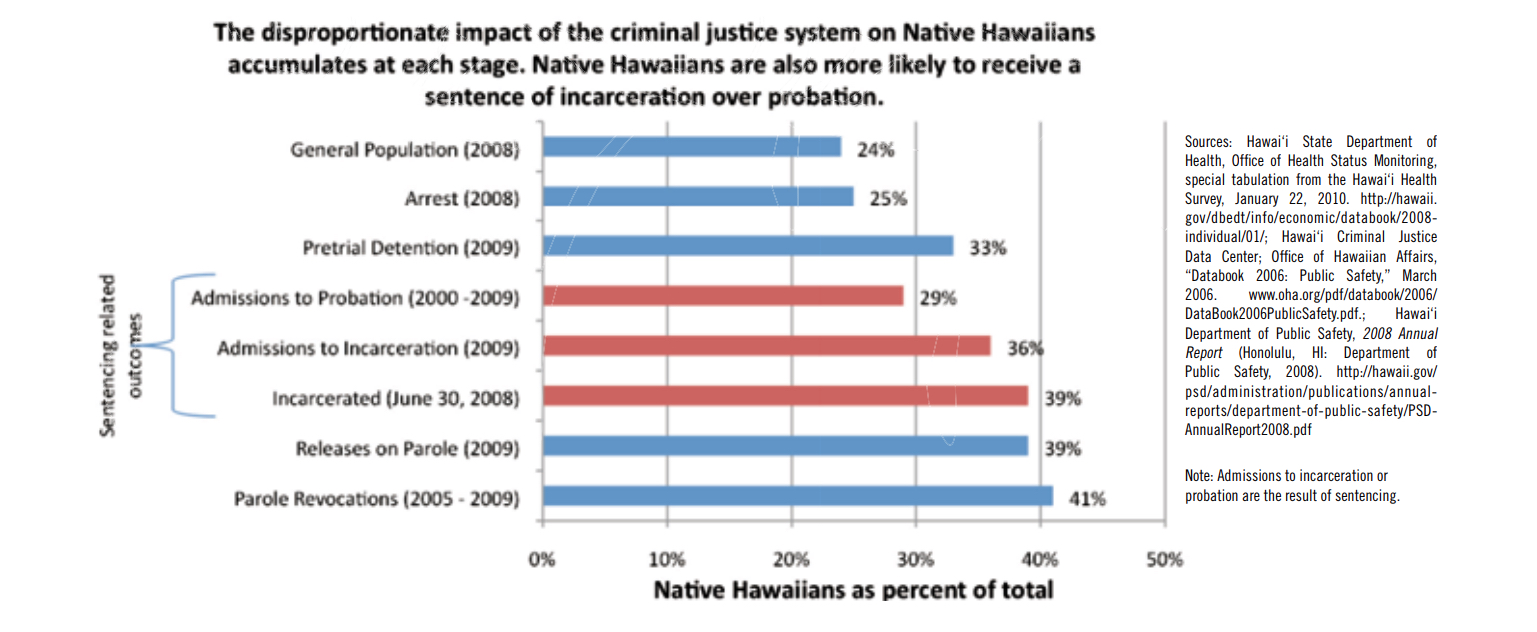
For more on this study, click here
SOVEREIGNTY, CULTURE, TODAY
Native Hawai’ians have been vocal about the effects on their lives and culture by the millions who embody the many variations of an ideology that encourages invasion and extraction in all its forms. From McKinley and his agents to modern day tourists and the developers who cater to their growing numbers and appetites, it is all part of the same harmful ideals.
AF3IRM Hawai’i website states “Hawai‘i is not the playground of the new gilded age…we are a battleground for indigenous, immigrant, and women’s self-determination. We focus on fighting for improvements to women’s daily lives on all fronts including the legislature, the city council, the courtroom, the boardroom, and the classroom.” Source
“The latest affliction of corporate tourism has meant a particularly insidious form of cultural prostitution. The hula, for example, an ancient form of dance with deep spiritual meaning, has been made ornamental, a form of exotica for the gaping tourist. Far from encouraging a cultural revival, as tourist industry apologists contend, tourism has appropriated and cheapened our dance, music, language, and people, particularly our women. Burdened with the commodification of our culture and exploitation of our people, Hawai’ians now exist in an occupied country whose hostage people are forced to witness, and for many of us to participate in, our collective humiliation as tourist artifacts for the world’s rich.”
Source.
Evictions of Hawai’ians lead to increasing protests, especially in communities scheduled for residential and commercial development. An early and typical example of this was the Kalama Valley eviction on O’ahu island in 1970. Rural Hawai’ians living by month-to-month leases on lands controlled by one of the largest private trusts in Hawai’i, the Bishop Estate, were given one month’s notice to leave their homes and farms of more than twenty years. The residents’ resistance called forth an outpouring of support throughout the archipelago. Although the residents failed to stop their eviction and the transformation of their pig and vegetable farms into upper-income developments, the resistance began to spread to every island. Source.
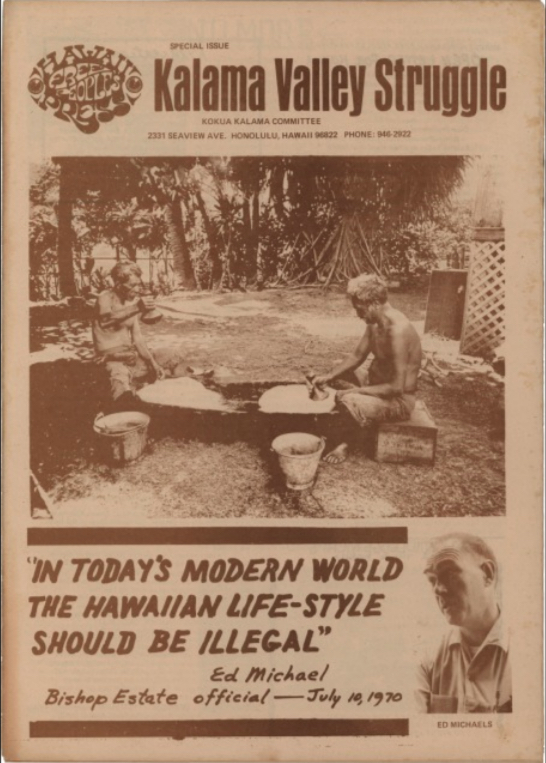
A Kalama Valley developer essentially stating Native Hawai’ians should not exist
By 1976, Hawai’ians were landing on Kaho’olawe Island to protest its use as a military bombing range since the Second World War. Kaho’olawe is home to many navigational and other ancient Native sites. After the death of two activists, and the arrests and jailing of many more, the bombing was finally halted in 1990. The Hawai’ians would eventually gain the island in 1993 when the Navy transferred the title to the state.
The decade of the 1980s witnessed enormous growth in political and cultural resistance on the part of Native Hawai’ians. Mass demonstrations, legal actions, and cultural assertions, like the building of beach villages or the occupation of sacred areas, continued. In addition, local and federal legislation designated monies for Hawai’ian communities, or for programs like education and health, in an obvious effort at pacification.
Hawai’i currently has the highest rate of homelessness in the nation, and 37% of these are Native Hawai’ian. Source. In Honolulu, tough laws were passed to criminalize some realities of homelessness in an effort to clear the streets of what tourists have cited is the main reason they did not plan on returning. Source.
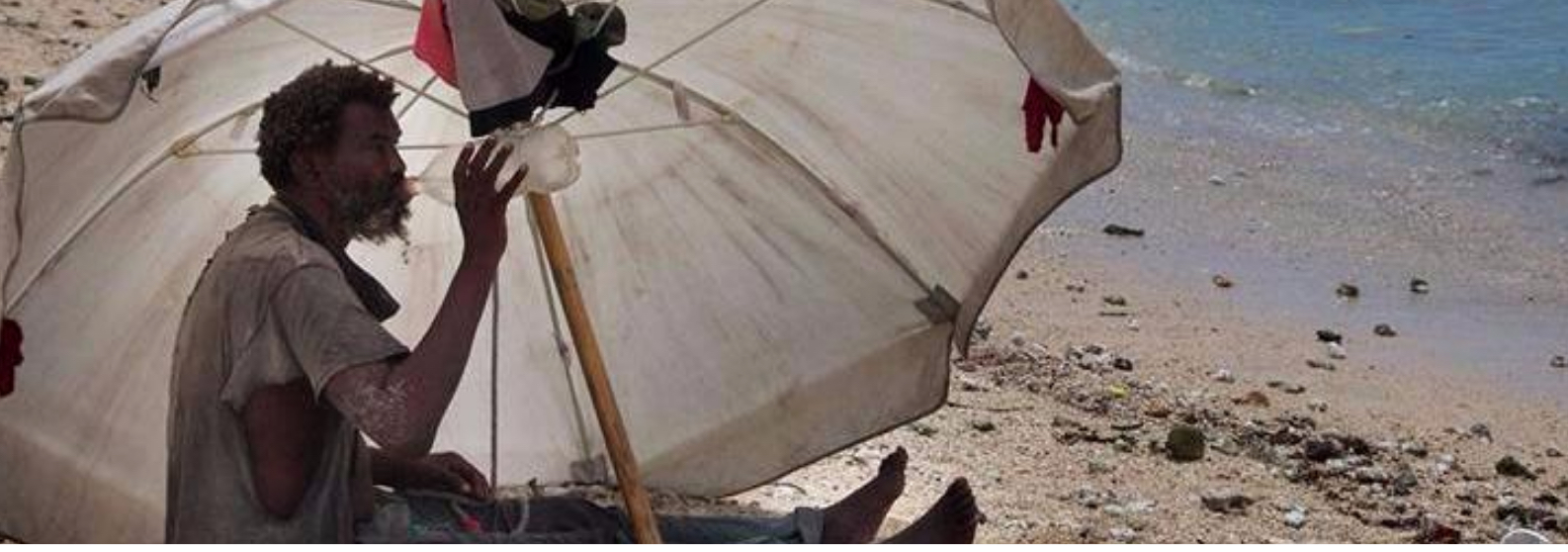
The irony of colonial-induced poverty and homelessness in one’s own land has continued to be a source of resistance and outrage.
Above, pictures of Professor Haunani-Kay Trask s a Hawai’ian nationalist, educator, political scientist, writer
In her article Settlers of Color and “Immigrant” Hegemony: “Locals” in Hawai‘i, Amerasia (2000), p. 17, Professor Haunani-Kay Trask argues that “documents like the Draft Declaration [of Indigenous Human Rights] are used to transform and clarify public discussion and agitation.” Specifically, Trask states
Efforts to further sovereignty include Kana’iolowalu, which is the Native Hawai’ian Roll Commission’s enrollment list of Native Hawai’ians in a registry of people eligible to develop a government. It is the Hawai’ian name given to the commission that embodies the work being done and the way it is being approached. Na’i refers to striving, achieving, overcoming and even conquering. Kamehameha I was also known as “Kana’iaupuni” or the one who conquered (
Some Native Hawai’ians believe that process of Kana’iolowalu and its cooperation with US political structures is inadequate, promotes a false narrative and belies the fact that the nation is illegally occupied:
“The sovereignty movement and Kana‘iolowalu falsely maintains that aboriginal Hawai’ians have a right to self-determination, which implies that aboriginal Hawai’ians were never nationals of a sovereign and independent State. Self-determination also implies that aboriginal Hawai’ians are an ethnic group residing within the United States of America. Hawai’ian history cannot support this position. Aboriginal Hawai’ians are the majority of the population of Hawai’ian subjects who have been subjected to Americanization and indoctrination. As an occupied State under an illegal and prolonged occupation, the proper framework to understand Hawai‘i’s unique situation is through international law and the laws of occupation and not through the laws of the United States, and, by extension, the laws of the State of Hawai‘i. In this way, Hawai‘i’s vibrant political and legal history is not only embraced but is honored and respected.” Source.
Hawai’i’s Own McKinley Statue
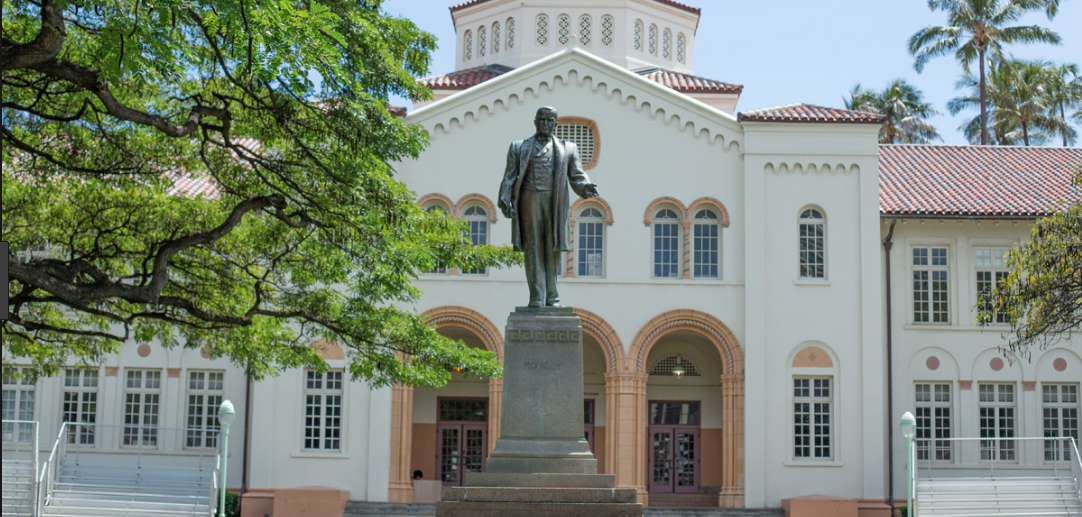
Today Native Hawaiians seek to remove a statue of William McKinley located on the grounds of McKinley High in Honolulu.
“President William McKinley is our Robert E. Lee to Pacific Islanders”
Supporters have started an online petition which notes, among other things:
“He is Robert E. Lee on a global scale. His statue and commemoration is a crime. McKinley’s statue and commemoration is an act condoning international crimes against Native persons of the aforementioned lands and beyond. It stands as a reminder of the same hateful racist-driven “white power” that we witnessed during the recent Charlottesville protests and all that it does to divide us to this day.”
Please consider signing the petition here
It is crucial that we make the effort to educate ourselves about these issues.
In 1993, Bill Clinton passed the Apology Resolution, acknowledging that the 1893 overthrow of the Kingdom of Hawai’i was done so with the active participation of agents and citizens of the United States and it further acknowledged that the Native Hawai’ian people never directly relinquished to the United States their claims to their inherent sovereignty as a people over their national lands.

